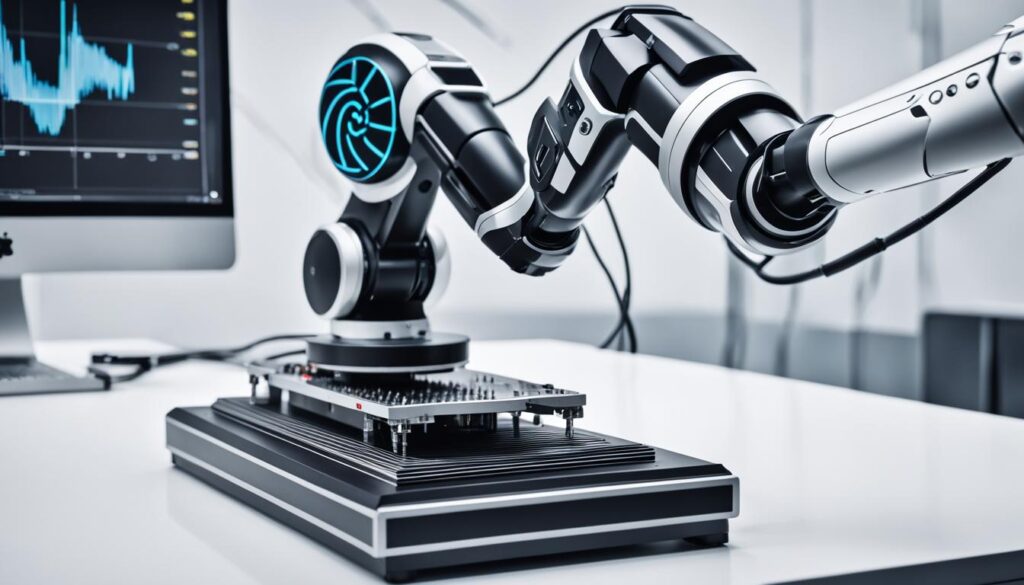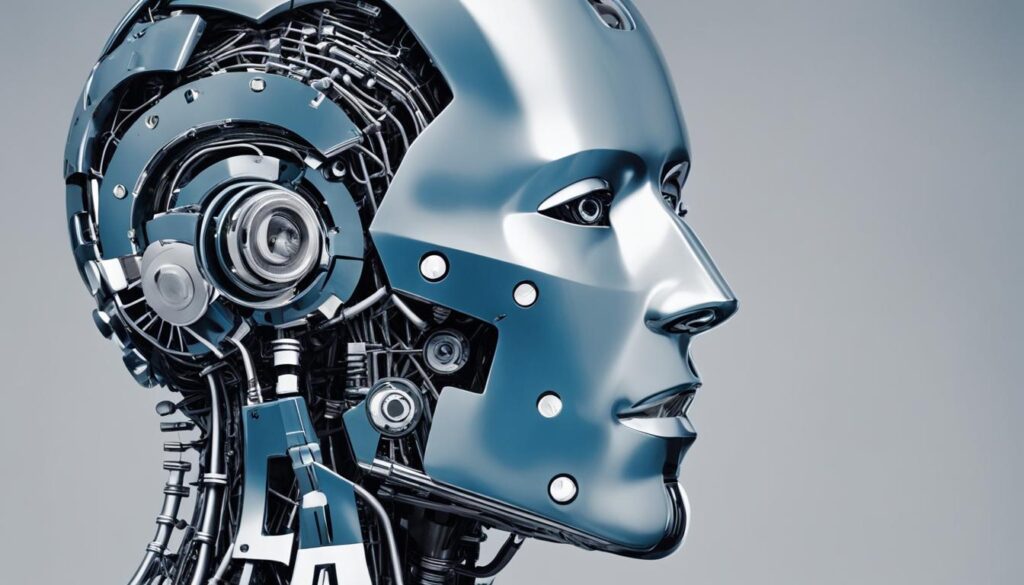Welcome to the world of AI voice recognition, where cutting-edge technology merges with human speech to revolutionize how we interact with computers and software applications. Have you ever wondered how voice recognition works in artificial intelligence (AI)? In this article, we will delve into the intricacies of voice recognition in AI, exploring the technology, algorithms, and models that make it possible.
Voice recognition technology in artificial intelligence enables computers and applications to understand and process human speech data. By harnessing the power of AI, computers can decipher spoken words, interpreting and translating them into text. This breakthrough innovation has paved the way for faster and more accurate information processing, benefiting numerous industries like healthcare, customer service, education, and entertainment.
While voice recognition technology has witnessed significant advancements in recent years, it still faces challenges when it comes to handling accents, dialects, and noisy environments. Nonetheless, it remains an indispensable tool that empowers businesses and individuals alike to communicate effortlessly with computers and applications.
Contents
- 1 What is Speech Recognition AI?
- 2 How Does Speech Recognition AI Work?
- 3 Use Cases of Speech Recognition AI
- 4 Challenges in Working with Speech Recognition AI
- 5 Conclusion
- 6 FAQ
- 6.1 How does voice recognition work in artificial intelligence?
- 6.2 What is speech recognition AI?
- 6.3 How does speech recognition AI work?
- 6.4 What are some use cases of speech recognition AI?
- 6.5 What are the challenges in working with speech recognition AI?
- 6.6 What is the future of voice recognition in AI?
- 7 Source Links
Key Takeaways:
- Voice recognition technology in artificial intelligence allows computers to understand and process human speech.
- AI algorithms and models analyze spoken language and convert it into text.
- Voice recognition in AI has diverse applications in industries like healthcare, customer service, education, and entertainment.
- Challenges include handling accents, dialects, and noisy environments, but continuous advancements are being made to overcome them.
- Voice recognition in AI has the potential to enhance everyday interactions between humans and machines.
What is Speech Recognition AI?
Speech recognition AI is a groundbreaking technology that harnesses the power of artificial intelligence to analyze and understand human speech data. Through sophisticated algorithms and machine learning techniques, this remarkable technology enables computers, software applications, and devices to comprehend and accurately transcribe spoken language into text.
The capabilities of speech recognition AI are truly remarkable. It has the ability to process vast amounts of information quickly and with a high level of accuracy, making it an invaluable tool across a wide range of industries and applications.
With ongoing advancements in AI, this technology continues to evolve, offering enhanced voice recognition techniques in artificial intelligence. Understanding voice recognition in AI is key to unlocking its full potential and leveraging its capabilities in various fields.
AI’s Capability in Voice Recognition
One of the core strengths of speech recognition AI lies in its ability to identify words and patterns within human speech, allowing for accurate transcription. Through continuous training and learning, AI algorithms gain a deep understanding of language structures and semantics, enabling them to interpret and convert spoken words into written form.
The accuracy and efficiency of AI-driven voice recognition techniques are truly impressive. Even in challenging scenarios with accents, dialects, or noisy environments, speech recognition AI can reliably transcribe speech, ensuring a seamless user experience.
As illustrated in the image above, speech recognition AI uses advanced algorithms to analyze spoken language and convert it into text, offering a comprehensive understanding of voice inputs.
Voice Recognition Techniques in Artificial Intelligence
Voice recognition techniques in artificial intelligence encompass a range of approaches and technologies. Some common techniques include:
- Statistical modeling: Utilizing statistical methods to analyze and interpret speech patterns.
- Deep learning: Leveraging neural networks to extract complex features and recognize spoken language with high accuracy.
- Hidden Markov Models (HMMs): Employing probabilistic models to represent speech patterns and transitions between different phonetic units.
- Natural Language Processing (NLP): Integrating NLP algorithms to enhance the understanding of spoken language and extract meaning from the transcribed text.
These voice recognition techniques, combined with AI’s computational power, enable speech recognition systems to achieve impressive levels of accuracy and reliability, paving the way for revolutionary applications.
In the words of renowned AI expert, Andrew Ng: “Speech will be the dominant way to interact with computers.” The rapid advancements in speech recognition AI certainly support this claim.
How Does Speech Recognition AI Work?
Speech recognition AI technology processes voice and language to enable computers and applications to understand human speech. The process involves multiple steps:
- Recognizing Words and Content: The AI analyzes the spoken words and identifies the content of the speech.
- Converting Audio into Text: It converts the audio input into text format, making it easier for computers to interpret and analyze.
- Determining Meaning and Intent: The AI system examines the context and meaning behind the spoken words, deciphering the intent of the speaker.
- Parsing Commands: It separates and extracts commands from the rest of the speech, allowing the computer to execute specific actions.
Natural Language Processing (NLP) is a critical component of speech recognition AI. NLP algorithms enhance the accuracy and efficiency of understanding human language patterns, making the technology more effective in real-world applications.
Continuous advancements in AI and machine learning have led to significant improvements in speech recognition technology. These advancements enable AI models to process voice recognition with higher accuracy and faster response times, making voice interactions a seamless part of our daily lives.

“Speech recognition AI technology has revolutionized the way we interact with computers and applications. It has the potential to enhance productivity, efficiency, and accessibility across various industries.”
Innovations in Speech Recognition AI
The evolution of speech recognition AI has paved the way for groundbreaking innovations in various sectors. Let’s take a look at some notable advancements:
| Industry | Advancement |
|---|---|
| Healthcare | Improved transcription of medical notes and records, facilitating faster and more accurate documentation. |
| Customer Service | Real-time voice recognition for call centers, enabling better customer support and issue resolution. |
| Education | Speech-to-text capabilities for remote learning, making educational content more accessible and inclusive. |
These advancements highlight the remarkable potential of speech recognition AI to enhance efficiency, improve communication, and simplify complex tasks across diverse industries.
Use Cases of Speech Recognition AI
Speech recognition AI technology has seen widespread adoption across various industries and applications. Its versatility and accuracy make it a valuable tool in different sectors, revolutionizing the way organizations interact with their customers and improve efficiency. Here are some key use cases of speech recognition AI:
Speech Recognition in Healthcare
In the healthcare industry, speech recognition technology plays a vital role in improving patient care and streamlining administrative tasks. Healthcare professionals can use speech recognition AI to transcribe patient records accurately and quickly. This enables them to devote more time to direct patient care, resulting in enhanced productivity and better patient outcomes.
Speech Recognition in Call Centers
Call centers heavily rely on speech recognition AI to analyze and understand customer calls. By leveraging this technology, organizations can efficiently process large volumes of customer interactions, identify patterns, and extract valuable insights. This, in turn, enables call center agents to provide better customer service, resolve issues promptly, and improve overall customer satisfaction.
Speech Recognition in Banking
Banks and financial institutions utilize speech recognition AI to enhance customer experiences and streamline operations. With this technology, customers can interact with virtual assistants or chatbots to inquire about account information, transfer funds, or obtain real-time updates. By automating routine tasks, speech recognition AI helps banks deliver faster, more accurate responses and improve customer engagement.
Speech Recognition in Telecommunications
The telecommunications industry benefits greatly from speech recognition technology. Service providers employ speech recognition AI to improve call management systems, accurately route customer inquiries, and provide personalized services. This not only enhances the customer experience but also increases operational efficiency and reduces costs for telecommunication companies.
Speech Recognition in Media and Marketing
Speech recognition AI tools are widely used in the media and marketing sector for transcription and content creation purposes. Content creators and digital marketers can leverage this technology to generate accurate and timely transcriptions of interviews, podcasts, or video content. With speech recognition AI, the process of creating compelling written content becomes faster and more efficient.
Speech recognition AI enables organizations to streamline processes, enhance customer experiences, and improve overall efficiency. From healthcare to call centers, banking to telecommunications, and media and marketing, this technology has numerous use cases and benefits across industries.

Challenges in Working with Speech Recognition AI
Working with speech recognition AI in artificial intelligence presents several difficulties that organizations must address to ensure successful implementation. These challenges encompass the rapid pace of technology development, accurate predictions for product development, tool selection and data analysis, algorithm creation, voice training, and privacy concerns.
Rapid Technology Development
The field of speech recognition AI is rapidly evolving, with new advancements and updates being released regularly. Keeping up with the latest developments and ensuring compatibility with existing systems and processes can be a significant challenge for organizations.
Predictions for Product Development
Accurate predictions for product development are crucial for creating effective and reliable speech recognition AI systems. Organizations need to anticipate and incorporate user requirements, language variations, and domain-specific terminology to deliver products that meet customer expectations.
Tool Selection and Data Analysis
Finding the right tools for speech recognition AI implementation and analyzing the vast amounts of data involved can be time-consuming and resource-intensive. Organizations must carefully evaluate and select suitable tools and software to ensure optimal performance and accuracy.
Algorithm Creation
Creating algorithms that understand both human and computer communication is a complex task. It requires continuous study, improvement, and refinement to achieve high levels of accuracy and natural language processing capabilities.
Voice Training
Training the speech recognition AI on specific voices can be a challenging process. It requires collecting and annotating extensive voice data from different speakers to ensure accurate recognition and transcription. Additionally, privacy concerns may arise, particularly regarding medical records and sensitive information.
Staff Education
Successful implementation of speech recognition AI relies on adequately educating staff about the technology and its benefits. Training programs and resources should be provided to help employees effectively utilize the AI system and incorporate it into their workflow.
“Working with speech recognition AI poses unique challenges that require careful consideration and strategic planning. Overcoming these difficulties can lead to improved efficiency, accuracy, and customer satisfaction in various industries.”

Conclusion
Voice recognition technology in artificial intelligence has witnessed remarkable advancements, revolutionizing various industries. Thanks to AI, machine learning, and deep learning models, voice recognition has become more accurate and efficient than ever before. As a result, we are experiencing a transformative shift in the way humans interact with machines.
The future of voice recognition in AI holds great promise. With continued technological advancements, we can expect to see seamless and intuitive interactions between humans and machines. This opens up a world of possibilities, from voice-controlled smart homes to hands-free navigation systems, making our everyday lives more convenient and efficient.
As the capabilities of voice recognition AI continue to evolve, industries such as healthcare, customer service, education, and entertainment are reaping the benefits. Healthcare professionals can now effortlessly transcribe patient records, while call centers provide more personalized and efficient customer service. The possibilities are endless, and the future of voice recognition technology in artificial intelligence is brighter than ever.
FAQ
How does voice recognition work in artificial intelligence?
Voice recognition in artificial intelligence uses algorithms to analyze and understand human speech data. It recognizes spoken words and translates them into text, enabling computers and software to comprehend and process information.
What is speech recognition AI?
Speech recognition AI is a technology that enables computers, applications, and software to analyze and understand human speech. Through AI algorithms, it can accurately transcribe spoken language into text, allowing for faster and more efficient information processing.
How does speech recognition AI work?
Speech recognition AI works by analyzing the voice and language of the speaker. It goes through steps such as recognizing the words and content in the speech, converting audio into text, and determining the meaning and intent behind the spoken words. Natural Language Processing (NLP) is also used to enhance accuracy and efficiency in understanding human language.
What are some use cases of speech recognition AI?
Speech recognition AI is used in various industries and applications. It is utilized in call centers for efficient customer call analysis, in banking for answering customer queries, and in telecommunications to improve call management and enhance customer service. Healthcare professionals use it to transcribe patient records, and the media and marketing industry benefits from it for transcription and content creation.
What are the challenges in working with speech recognition AI?
Challenges in working with speech recognition AI include keeping up with rapid technological developments, finding the right tools, and analyzing data effectively. Creating algorithms that understand both human and computer communication requires careful study and improvement. Privacy concerns regarding medical records and training the AI on specific voices are also challenges. Educating staff on the technology is essential for successful implementation.
What is the future of voice recognition in AI?
Voice recognition technology in artificial intelligence has evolved significantly and shows promise for seamless interactions between humans and machines. The advancements in AI, machine learning, and deep learning models have improved the accuracy and efficiency of speech recognition. As technology continues to advance, voice recognition AI will continue to shape and enhance our everyday lives.




